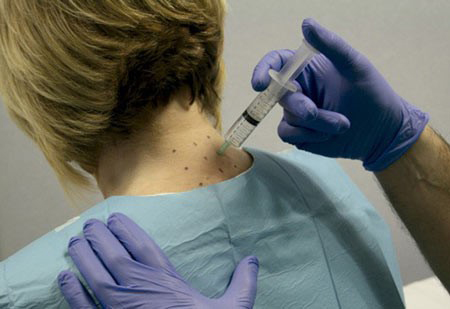Cause of cervical disc and its treatment methods
herniated disc neck treatment
Due to improper neck position, sudden and continuous pressure and impact on the cervical vertebrae are damaged. Over time, these intense movements cause the cervical disc to form.
The neck is one of the essential organs in the body, and it spreads to many parts of the body. The work of some organs also depends on the spine, so you have to be careful in your movements because the neck moves back and forth.
When the vertebrae in the neck are damaged, the patient experiences neck pain and limitations in performing their duties. Still, if a cervical disc herniation occurs, it can be medically observed by rupture and displacement of the cervical disc. A neck hernia damages the roots of the spinal cord and stimulates and spreads pain to other parts of the body.
A variety of factors can cause cervical discs. The space between the cervical vertebrae decreases with age due to aging and dryness, so the likelihood of disc protrusion increases and the ligaments and bones that make up the spine become smaller as the strength and flexibility of these changes increase, over time and with age, the cervical spinal cord narrows and puts pressure on the spinal cord. As a result, the cervical spinal canal becomes narrower.
how to fix a bulging disc in neck

Cause of cervical disc:
- Obesity
- Excessive smoking
- Moving and lifting objects improperly
Location of the neck disc:
People with torn or dislocated herniated discs often suffer from neck pain that may be mild or severe. The pain primarily affects the lower part of the neck, and in some cases, disc symptoms appear on both sides or in the center of the neck. Symptoms of a neck hernia are sometimes accompanied by severe pain that spreads to other parts of the body to the point that the pain also affects the strength and ability of the hands and fingers, and sometimes the patient suffers from mild headaches.
You can use the following methods to treat and improve the “cervical disc”:
medical necklace :
Medical necklaces make the neck immobile and rest for a while because they do not allow the neck muscles to move, these necklaces reduce the pressure on the nerve roots as the muscles relax, but you have to be careful. This necklace should not be used for a long time because it worsens the patient’s condition and weakens the neck muscles.
When damaged tissues in the body undergo a healing process during blood flow to these tissues, the body tissues also need vitamins and minerals to regenerate nutrients such as oxygen, the primary tissue repair element. If the affected area does not receive the oxygen it needs, lactic acid builds up in the area, eventually causing pain.
Ozone therapy :
In ozone therapy, nerves are first anesthetized using local anesthesia, anti-inflammatory drugs reduce pain, swelling, and inflammation, and thus increase the intensity of blood flow, then using minerals and vitamins, tissue. They begin to nourish and regenerate.

Ozone is initially inactivated oxygen, but it actively delivers the required oxygen to the damaged tissues after injection into the body’s tissues.
Research shows that the success rate of ozone therapy is 95%, and this statistic has been recorded and proven in prestigious medical and international journals. Patients receiving ozone therapy should not worry about its side effects because it is free of any side effects, unlike other injection methods. The important thing is that the results of this treatment do not disappear over time and are permanent.
In most cases, patients only need three to five treatment sessions to heal, even with varying degrees of injury, and the effect of treatment is one to three days after the injection. Still, you should be aware of the impact of the treatment and the healing process. In case of injury, the visibility is different, and it is injected once or twice a week to achieve complete recovery.
Non-surgical treatments for cervical disc :
People whose neck pain is not due to trauma can use non-surgical treatments to treat and improve the condition. These include preventative therapies such as timing, medication, and muscle relaxants, which are temporarily prescribed by a doctor to reduce pain and should be used regularly. If you take your doctor’s prescription seriously and follow your doctor’s advice, your neck pain will improve, and you will not need surgery.
In some cases, preventative measures do not help reduce neck pain and improve the cervical disc. The patient has difficulty balancing and walking, loses his balance very quickly, the disease also progresses, and there are progressive symptoms in the arm. In most people, this surgery is booming, and the patient is in a better condition after surgery.
Neck disc surgery:
There are several methods for neck surgery, each of which is selected by the doctor according to the patient’s condition and varies according to the severity of the disease. A strong connection is established between two or more vertebrae of the spine in this operation, which is done with different tools such as a plate or screw.
Anterior neck surgery:
In this operation, the surgeon removes a part of the vertebral body that is often accompanied by a larger incision. This method reduces the pressure on the spinal cord because more bones are removed in this surgery. The recovery process will take longer.


